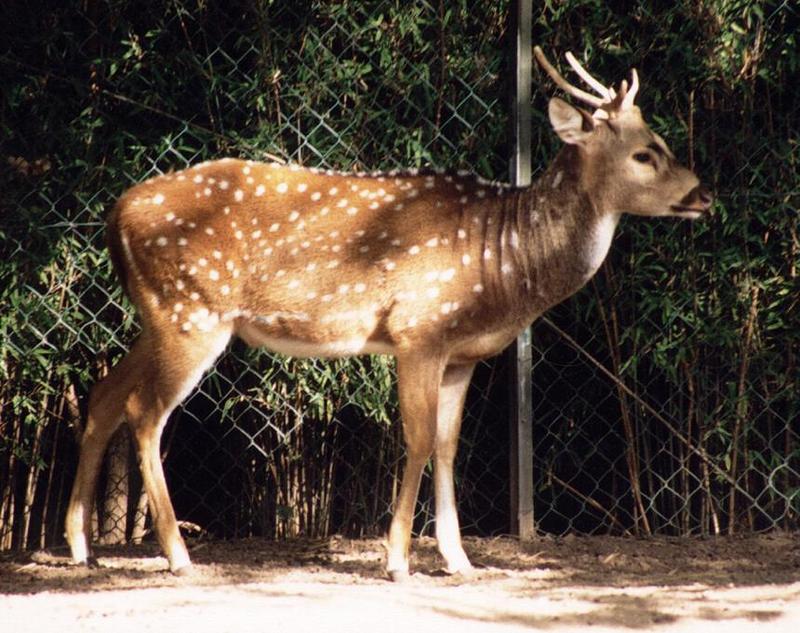|
| Query: cervus axis | Result: 14th of 28 | |
More Copenhagen Zoo - Axis Deer (Axis axis) male - and a question on using Photoshop
| Subject: | More Copenhagen Zoo - Axis Deer (Axis axis) male - and a question on using Photoshop
| | Poster: | Ralf Schmode (rschmode@gmx.net)
| |

| File size : 115332 bytes
File date : 1999:06:17 09:00:00
Resolution: 860x681
Jpeg process : Baseline
Posted Newsgroups: alt.binaries.pictures.animals
Posted Date: 12 May 1999 13:14:00 -0500 |
More Copenhagen Zoo - Axis Deer (Axis axis) male - and a question on using Photoshop
Hi,
here comes another scan of a picture I have taken in Copenhagen Zoo some
years ago. This is my first scan which has been refined with Adobe
Photoshop 4.0 LE rather than Micrografx Picture Publisher. As I told
you, I have many prints with a "silky" (i. e. rough) surface which tend
to have white speckles all over the scan due to the scanner lamp being
reflected in the pits and dots of the print surface. Photoshop has a
filter which I believe is "remove dust and scatches" or similar in
English; that filter works absolutely gorgeous with these problematic
scans. It takes about 20 minutes to do manually with Picture Publisher
what with Photoshop is done automatically within seconds.
However, one question has arised: I have noticed that Photoshop LE
displays the picture a lot brighter than all my other graphic viewers
and editors do, as if the gamma value was set to about 1.5. There can be
two reasons: Adobe uses a proprietary display driver (which I consider
very unlikely) or it works with a pre-selected gamma value higher than
1. I am positive there must be an option to switch that off, but I
haven't yet found it. Is there anyone who can put some light on this
mystery?
Thanks for your consideration -
Ralf
--
All the pics I post here can be seen at
http://mitglied.tripod.de/schmode
filename="Axisdeer001.jpg"
The chital or cheetal or spotted deer or axis deer (Axis axis) is a deer found in the Indian subcontinent. Axis deer is sexually dimorphic: males are larger than females, and antlers are present only on males. The upper parts are golden to rufous, completely covered in white spots.
|
Comments |
|---|
| | Guest |
|
Scientific Name: Axis axis (Erxleben, 1777)
Common Names: Chital, Cheetal, Axis Deer, Indian Spotted Deer, Spotted Deer; [French] Cerf axis
Synonyms: Cervus axis Erxleben, 1777 |
^o^
Animal Pictures Archive for smart phones
^o^
|
|
|

